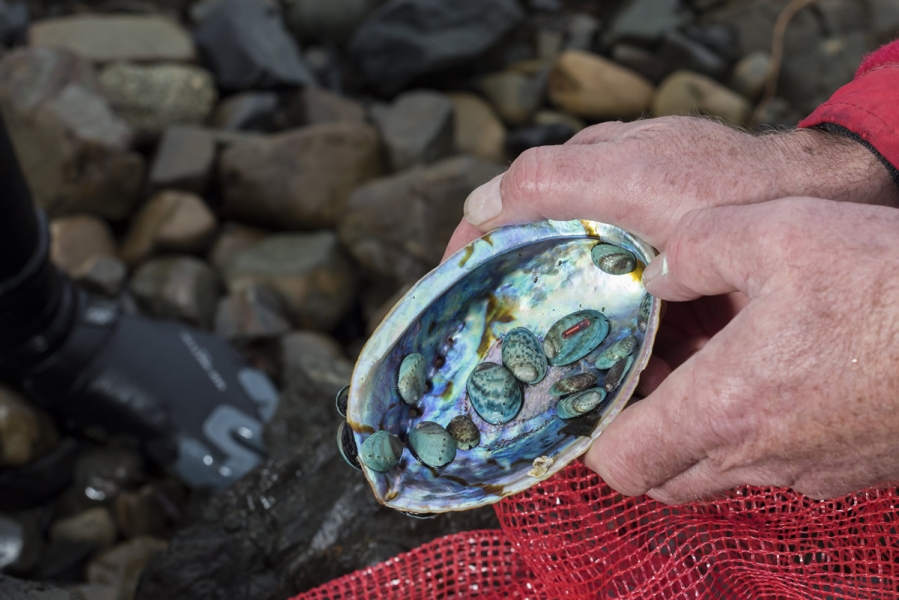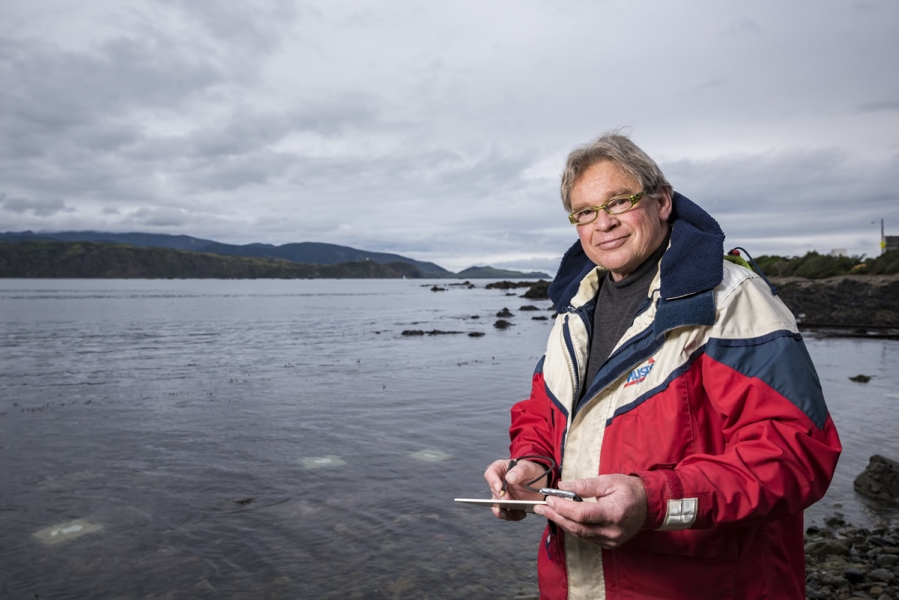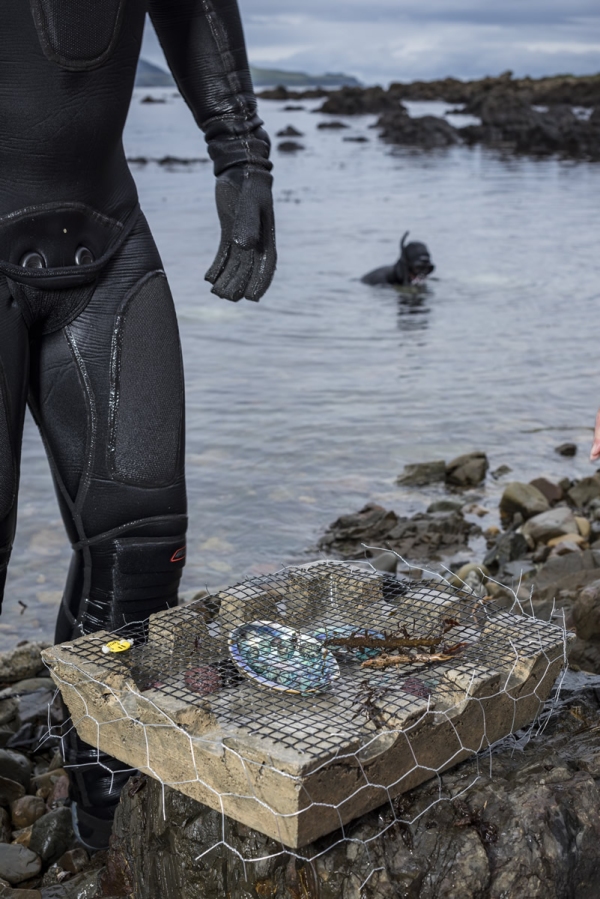Twelve bespoke concrete structures resembling "upside down oven trays" may hold the key to restoring the paua population off Kaikoura wiped out by last November's earthquake.
NIWA fisheries scientist Reyn Naylor, working with the Paua Industry Council, this week began testing his ingenious design off Wellington's south coast – yesterday they positioned 12 structures, each with 50 juvenile paua attached, on the seabed at Flax Bay.
The juvenile paua are each just 30mm long and Mr Naylor hopes they will remain under the structures and establish themselves there.
"We will check them every day for five days, then check them once a week, then once every two weeks for two months in total."
Mr Naylor made the structures behind a shed at NIWA's Greta Point site in Wellington. They are 40cm long, 30cm wide and 11cm high.
"They're like an upside down oven tray but made of concrete. They have lots of little doors around the outside so seaweed and other food can wash in and the paua can come and go."
Paua like tight crevices, being in the dark and confined spaces where they can hide.
"They don't want starfish coming in and eating them. We're putting chicken wire over the doors for a while to keep the predators out." Mr Naylor concedes the trial may have challenges.
"I put out three structures a couple of months ago, and after six weeks I had 20 under two of them, but they were bigger to begin with. So I know these attract larger paua but the habitat underneath these structures may not be complex enough for the little guys."
Mr Naylor says if the baby paua all leave and live somewhere else and survive, the structures will still provide ongoing habitat for larger juveniles and adults that can live on the outside.
If the trial succeeds, the next step is to carry out a similar pilot study off Kaikoura. If that shows similar results, 300 structures will be placed on the seabed at five different sites.
"The earthquake caused a huge loss of juvenile paua habitat and juveniles but if you just put them back without any habitat they won't survive. This is not on a scale big enough to return the population to what it was before the earthquake, but if it works it will provide a tool to help restore the habitat."
The work is funded by the Paua Industry Council and Seafood Innovations Ltd.




